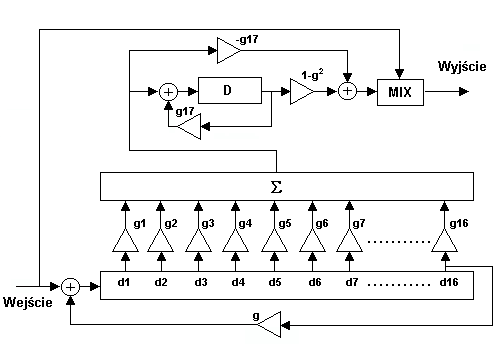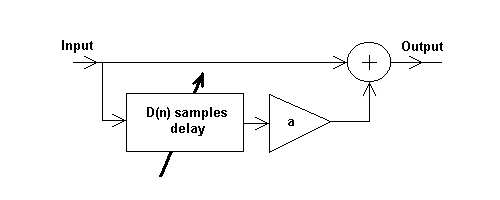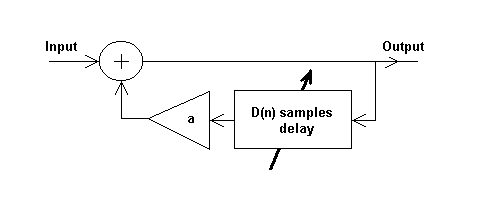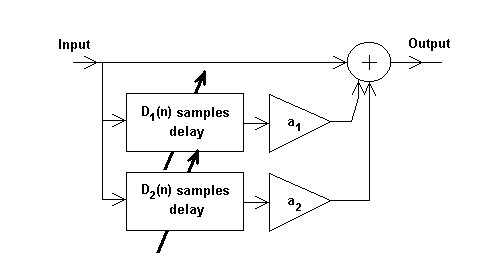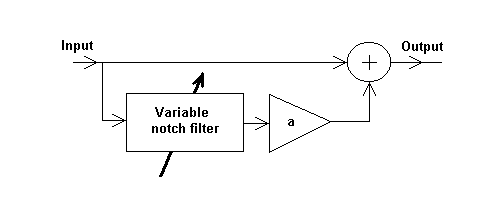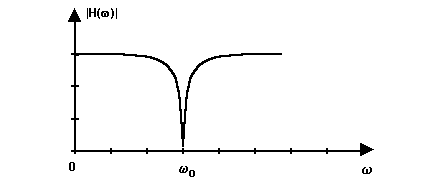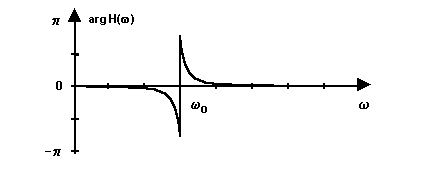|
| 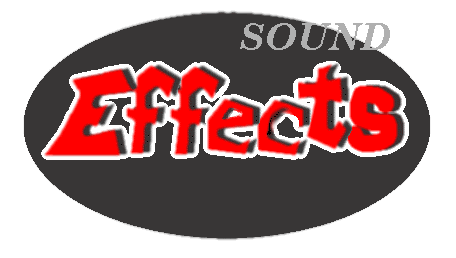 |
|
|
Sound effects as echo, reverb, chorus, flanger or phaser
are indispensable in sound productions. They are also part of every-day use equipment.
Most of them is realized with a signal processor,
which can be as a separate module or on the same board, for example in a keyboard or a synthesizer module.
A typical idea scheme is shown on pic.1.
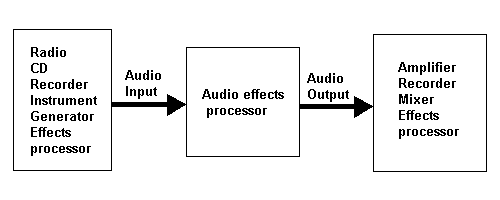
Pic.1. The scheme of sound processing system
The processor takes the input signal from an instrument or a recorder and samples it,
for example with a 44.1kHz frequency. Then the signal is processed according to an algorithm,
reconstructed to an analog state and put to next system device, for example an acoustic amplifier.
In digital systems the process of sampling and reconstruction can be omitted and the signal
is transmitted only in a digitalized state. It is necessary to remember if sample frequencies of particular system elements are the same,
and if not a digital signal resample algorithm is needed.
The sound effects have become a part of sythesizers in 80's, when
they were improving sounds of piano or strings by use of chorus, and in 90's have become an integral part of such devices.
|
|
An echo is a repetition of the original audio sound after a fixed time period with attenuated amplitude.
The effect imitates acoustic wave reflections from the large, distant obstacles. If the repetition is fast it is called flattering echo.
The realization of a single reflection is simple : it is a FIR filter with only one delay line as shown on pic.2.

Pic.2. The scheme of FIR filter
The difference equation is as follows y(n)=x(n)+ax(n-D) , where D is a delay in samples, and coefficient a describes the attenuation
related with an object reflection.
The transfer function is H(z)=1+az-D, so
the magnitude response has dips at w=2kp/D
with magnitude 1-a and peaks at w=(2k-1)p/D
with magnitude 1+a.
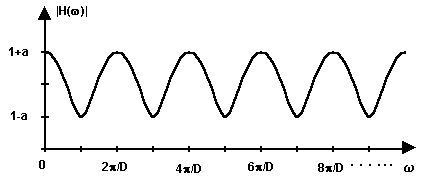
Pic.3. The magnitude of FIR filter
The realization of multiple echo with equal intervals is an
IIR filter shown on pic.4.
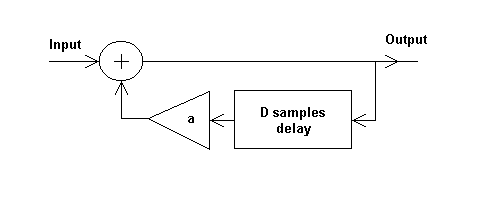
Pic.4. The scheme of IIR filter
The difference equation is as follows
y(n)=ay(n-D) +x(n), where D is a delay in samples, and coefficient a describes the attenuation
related with an object reflection. As the transfer function is H(z)=1/(1-az-D)
, so the magnitude response has dips at w=(2k-1)p/D
with magnitude 1/(1+a) and peaks at w=2kp/D
with magnitude 1/(1-a). One should remember that IIR filter can be unstable, so a<1. Otherwise the filter
becomes a generator.
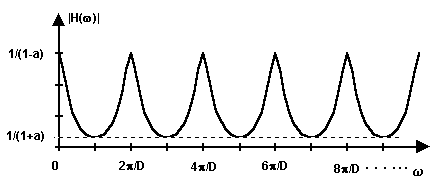
Pic.5. The magnitude of IIR filter
Of course, to get the echo effect the delay should be significant D = [td*fs], where td>100ms, therefore at sample frequency fs=44,1kHz the delay is D>4410. You can get a comb filter if time delay td is about milliseconds. The effect can also be modified by replacing scaling element a lowpass filter, it simulates stronger attenuation of high frequencies than low frequencies.
In synthesizers the echo can be obtained by retriggering
ADSR envelope generator or generating again MIDI code.
|
|
The reverberation phenomenon is present in every limited space and is the result of complex acoustic wave reflections
from walls as well as other objects.
The amount of these reflections is so high that they are unperceived by human ear.
To state the quantity of reverberation it is necessary to measure
reverberation time defined as the time after which the energy of reflected acoustical wave
decreases to level of -60dB in relation to the level in the moment of switching off the test impulse.
The phenomenon has two phases :
1. early reflections - waves reflected for the first time reach the listener
2. reverberation - reiteratedly reflected waves that are unperceived
The early realizations were based on mechanical interference
- a spring-line reverberation unit, used till now in guitar amplifiers
- and tape-based feedback flutter echo unit. Next development step was
analog delay line replaced in 80's by its digital version,
and then signal processors have been applied, so every parameter can be simulated.
The reverb is very important in acoustics. The reverberation quality influence on speech intelligibility and instrument sound.
Thanks to the artificial reverb it is possible to regulate the spaciousness of recordings and other sound productions.
The reverb algorithm is consisted of a few filters mentioned in echo chapter, but this time the time delays are much shorter.
There is also new type of filter - allpass filter.
The filter gives the same effect as echo, but the magnitude response in constant in frequency domain - so the coloration effect is omitted.
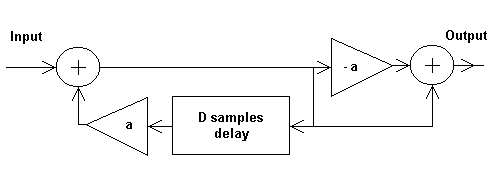
Pic.6. The allpass filter
The transfer function is
H(z)=(-a+z-D)/(1-az-D).
Because the reverb algorithm is much sophisticated there is plenty of solutions.
The algorithm below is Schroeder algorithm.
